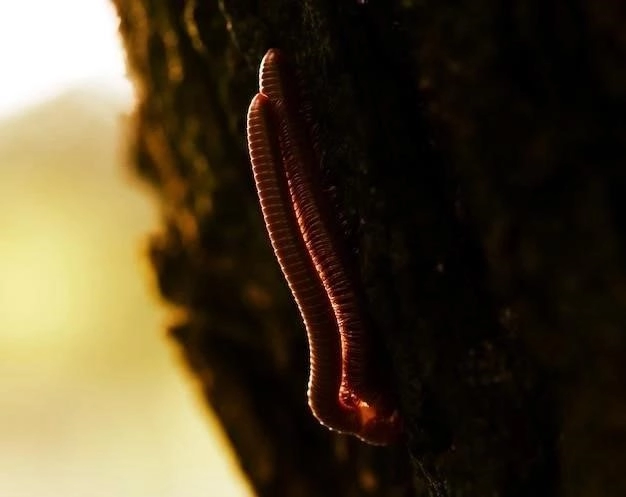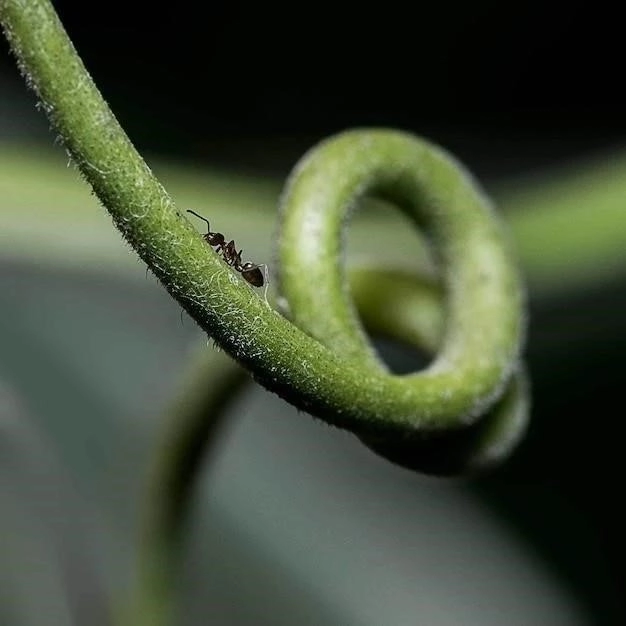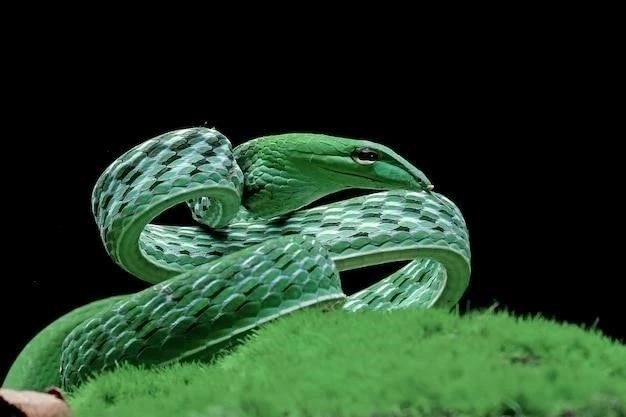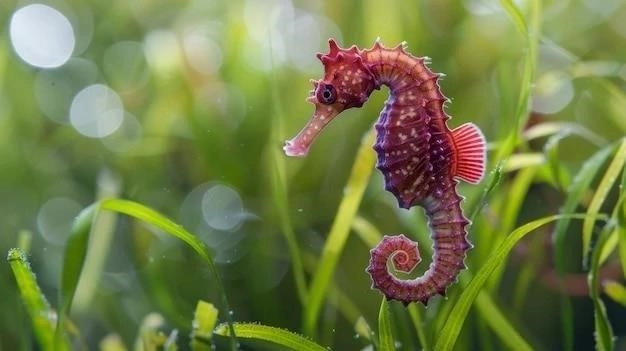Giant tube worms, Riftia pachyptila, are marine invertebrates that inhabit hydrothermal vent ecosystems in the deep ocean. These remarkable creatures, first discovered in 1977, thrive in conditions that are incredibly harsh and toxic to most other life forms. This in-depth examination will delve into the fascinating biology of the giant tube worm, exploring its unique adaptations, symbiotic relationships, and ecological significance.
Discovery and Habitat
The discovery of the giant tube worm, Riftia pachyptila, revolutionized our understanding of life on Earth. Prior to 1977, the idea of complex ecosystems thriving in the deep ocean, devoid of sunlight and fueled by chemosynthesis, was inconceivable. This groundbreaking discovery was made during an expedition to the Galapagos Rift, a region of active volcanic activity along the ocean floor.
The expedition, a joint venture between French and American scientists, utilized the deep-sea submersible, Alvin, to explore the depths of the ocean. What they found astonished the world: towering hydrothermal vents spewing superheated, mineral-rich fluids into the icy darkness. Surrounding these vents was an unexpected oasis of life, a vibrant community of organisms, with giant tube worms as its most prominent members.
These hydrothermal vents, often referred to as “black smokers” or “white smokers” based on the color of their emissions, are formed by the interaction of seawater with the Earth’s magma. As cold seawater seeps into cracks and fissures in the ocean crust, it gets superheated by the underlying magma. This superheated water, now rich in dissolved minerals and gases, rises back to the ocean floor, creating hydrothermal vents.
Giant tube worms are specifically adapted to thrive in these extreme environments. They are found in close proximity to hydrothermal vents, where they form dense clusters, sometimes numbering in the hundreds per square meter. The vents provide a steady supply of hydrogen sulfide, a toxic gas to most life forms, which the giant tube worm’s symbiotic bacteria utilize for chemosynthesis.
These unique ecosystems are not restricted to the Galapagos Rift. Hydrothermal vents, and the life they support, including giant tube worms, have been discovered in various locations across the globe, including the East Pacific Rise, the Mid-Atlantic Ridge, and the West Pacific Back-Arc Basins. They are a testament to life’s incredible ability to adapt and thrive in even the most challenging environments.
Anatomy and Physiology
The giant tube worm, Riftia pachyptila, presents a fascinating example of adaptation to the extreme conditions of hydrothermal vent ecosystems. Their unique anatomy and physiology are tailored for survival in these harsh environments, characterized by high pressure, extreme temperatures, and toxic chemicals.
Visually striking, giant tube worms are characterized by their large size and vibrant red plumes. They can reach lengths of over 2 meters, with their tubular bodies anchored securely to the ocean floor within chitinous tubes. These tubes, secreted by the worm, provide protection and structural support. The most distinctive feature, however, is the bright red plume, an extension of the worm’s body that acts as a specialized organ for gas exchange and nutrient uptake.

A closer look at their internal anatomy reveals further adaptations. Giant tube worms lack a digestive system in the traditional sense. They have no mouth, gut, or anus. Instead, they possess a large, spongy organ known as the trophosome, which fills much of their body cavity. This trophosome houses dense populations of symbiotic bacteria, essential for the worm’s survival.
These symbiotic bacteria are chemoautotrophs, meaning they can synthesize organic compounds from inorganic substances using energy derived from chemical reactions. In the case of Riftia pachyptila, the bacteria utilize hydrogen sulfide, abundant in hydrothermal vent fluids, as an energy source to convert carbon dioxide into organic molecules, providing sustenance for themselves and their host worm.
To transport the necessary chemicals for both respiration and chemosynthesis, giant tube worms possess specialized hemoglobins. These hemoglobins, responsible for the bright red color of the plumes, have a remarkable ability to bind not only oxygen, but also hydrogen sulfide. This adaptation allows the worm to transport these chemicals to the symbiotic bacteria residing in the trophosome without being poisoned by the sulfide.

The unique anatomy and physiology of the giant tube worm, therefore, represent a remarkable example of adaptation to the extreme environments of hydrothermal vents. Their ability to thrive in such conditions highlights the diversity of life and the power of symbiotic relationships in shaping the ecological landscape of our planet.
Symbiotic Relationship with Chemoautotrophic Bacteria
The survival of the giant tube worm, Riftia pachyptila, hinges on a remarkable symbiotic relationship with chemoautotrophic bacteria that reside within its trophosome. This intricate partnership, a cornerstone of the hydrothermal vent ecosystem, exemplifies the interconnectedness of life in even the most extreme environments.
The giant tube worm, lacking a conventional digestive system, relies entirely on its symbiotic bacteria for nutrition. These bacteria, in turn, depend on the worm for a stable environment and a steady supply of the raw materials needed for chemosynthesis. This mutually beneficial exchange forms the basis of their symbiotic relationship.
The key to this partnership lies in the bacteria’s ability to harness energy from inorganic compounds, a process known as chemosynthesis. The hydrothermal vents, where giant tube worms thrive, spew fluids rich in hydrogen sulfide, a toxic gas for most organisms. However, the symbiotic bacteria within the worm’s trophosome have evolved the remarkable ability to utilize this hydrogen sulfide as an energy source.
Through a series of chemical reactions, the bacteria oxidize hydrogen sulfide, effectively stripping it of electrons. This process releases energy, which the bacteria use to convert carbon dioxide, readily available in the environment, into organic compounds such as sugars. These organic compounds then serve as a source of energy and building blocks for both the bacteria and their host worm.
The giant tube worm contributes to this symbiotic relationship by providing a safe haven and the necessary ingredients for chemosynthesis. The worm’s specialized hemoglobin, present in its blood, has an exceptional capacity to bind not only oxygen, essential for the worm’s respiration, but also hydrogen sulfide, without being poisoned. This efficient transport system delivers oxygen and hydrogen sulfide to the bacteria residing in the trophosome, fueling their chemosynthetic processes.
This intricate and obligate partnership between the giant tube worm and its chemoautotrophic bacteria exemplifies the crucial role of symbiosis in supporting life in extreme environments. Their interdependence highlights the remarkable adaptability of life on Earth and the diverse strategies organisms have evolved to thrive in even the most challenging of conditions.

Energy Production and Metabolism
Giant tube worms, Riftia pachyptila, reside in the depths of the ocean, devoid of sunlight. This lack of light eliminates photosynthesis as a viable energy source. Instead, these fascinating creatures rely on a unique metabolic strategy centered around chemosynthesis, a process carried out by their symbiotic bacteria, to fuel their energy needs.
The energy production process begins with the hydrothermal vents, which release geothermally heated water rich in dissolved minerals, including hydrogen sulfide. While toxic to most life forms, hydrogen sulfide serves as the primary energy source for the chemoautotrophic bacteria harbored within the giant tube worm’s trophosome.
These bacteria possess specialized enzymes that enable them to oxidize hydrogen sulfide, essentially stripping it of electrons. This oxidation reaction releases energy, which the bacteria harness to drive the synthesis of adenosine triphosphate (ATP), the universal energy currency of cells. This energy-storing molecule plays a crucial role in powering various cellular processes.
The bacteria then utilize this ATP to fuel the fixation of carbon dioxide into organic compounds, a process analogous to photosynthesis but driven by chemical energy instead of light. This carbon fixation process results in the production of sugars, which serve as a source of energy and building blocks for both the bacteria and their host worm.
The giant tube worm plays a critical role in this energy production cycle. Its specialized hemoglobin, with a remarkable capacity to bind both oxygen and hydrogen sulfide, transports these essential molecules to the bacteria residing in the trophosome. The worm essentially acts as a conduit, delivering the necessary ingredients for chemosynthesis to its symbiotic partners.
This unique metabolic system, fueled by chemosynthesis, enables giant tube worms to thrive in the deep-sea environment, independent of sunlight. Their energy production and metabolic pathways exemplify the incredible adaptability of life and the diverse strategies employed by organisms to obtain energy in even the most extreme environments on Earth.
Growth and Reproduction
Giant tube worms, Riftia pachyptila, exhibit remarkable growth rates and a unique reproductive strategy adapted to the ephemeral nature of hydrothermal vent ecosystems. Their life cycle highlights the delicate balance between exploiting the transient opportunities provided by these deep-sea oases and ensuring the continuation of their species.
Giant tube worms are renowned for their rapid growth. Studies suggest they can grow at astonishing rates, reaching lengths of over 1.5 meters within a few years. This rapid growth is fueled by the abundance of nutrients provided by their chemoautotrophic symbionts, enabling them to quickly capitalize on the favorable conditions around hydrothermal vents.
Reproduction in giant tube worms is a complex process that presents unique challenges in the deep-sea environment. These sessile creatures, anchored to their tubes, cannot actively seek out mates. Instead, they rely on broadcast spawning, releasing their gametes—sperm and eggs—into the surrounding water.
Timing is crucial for successful fertilization. Giant tube worms release their gametes in massive, synchronized spawning events, increasing the likelihood of sperm finding eggs in the vast expanse of the ocean. These events are often triggered by environmental cues, such as changes in water temperature or chemical signals released by other worms.
Once fertilized, the eggs develop into free-swimming larvae. These larvae, unlike their adult counterparts, do not harbor symbiotic bacteria. They must survive in the water column, relying on yolk reserves, until they encounter a suitable hydrothermal vent environment.
Upon reaching a suitable location, the larvae undergo a remarkable transformation. They settle on the ocean floor, forming a primary tube, and acquire their symbiotic bacteria through an unknown mechanism. Once the symbiotic relationship is established, the larvae develop into adult worms, completing their life cycle.
The growth and reproduction of giant tube worms demonstrate a remarkable adaptation to the challenges of the deep-sea environment. Their rapid growth, synchronized spawning events, and unique larval stage highlight the intricate interplay between exploiting the ephemeral nature of hydrothermal vents and ensuring the survival of their species in these dynamic ecosystems.
Hydrothermal Vent Ecosystem
Giant tube worms, Riftia pachyptila, are keystone species in the remarkable hydrothermal vent ecosystems found in the deep ocean. These unique habitats, shrouded in darkness and fueled by chemosynthesis, support a surprisingly diverse and abundant assemblage of life, with giant tube worms playing a pivotal role in shaping the ecological community.
Hydrothermal vents, often described as oases in the deep, are characterized by the expulsion of geothermally heated water rich in dissolved minerals. These vents provide the foundation for a complex web of life, fueled not by sunlight but by the energy released from chemical reactions, a process known as chemosynthesis.
At the base of this food web are chemoautotrophic bacteria, like those found within the trophosome of giant tube worms. These remarkable microorganisms possess the extraordinary ability to harness energy from inorganic compounds, such as hydrogen sulfide, and convert it into organic matter. This process provides the primary source of energy for the entire hydrothermal vent ecosystem.
Giant tube worms, with their symbiotic bacteria, form the foundation of a complex food chain. Organisms like crabs, shrimp, and fish graze on the bacteria-rich plumes of the tube worms, while others, such as mussels and clams, filter bacteria from the surrounding water. Predators, including octopuses and deep-sea fishes, prey on these organisms, creating a complex web of interconnected relationships.
The presence of giant tube worms also provides structural complexity to the hydrothermal vent environment. Their tall, chitinous tubes offer refuge for smaller organisms, creating microhabitats within this unique ecosystem. This increased structural complexity further contributes to the biodiversity found in these oases of life on the deep ocean floor.
The discovery of hydrothermal vent ecosystems and the realization that life could thrive in such extreme environments, fueled by chemosynthesis, revolutionized our understanding of life on Earth. Giant tube worms, with their unique adaptations and central role in these ecosystems, stand as a testament to the remarkable resilience of life and the intricate ways in which organisms interact to form thriving communities in even the most challenging environments on our planet.
Importance to Science

The discovery of the giant tube worm, Riftia pachyptila, and its remarkable adaptations to the extreme conditions of hydrothermal vents, has been nothing short of revolutionary for the scientific community. This extraordinary creature has provided invaluable insights into a wide range of scientific disciplines, challenging our understanding of life on Earth and opening up new avenues for exploration and research.
One of the most significant contributions of the giant tube worm to science is the revelation of chemosynthesis as a viable alternative to photosynthesis. Prior to their discovery, sunlight was considered the ultimate source of energy for all life on Earth. However, the existence of complex ecosystems thriving in the perpetual darkness of the deep ocean, fueled by chemosynthetic bacteria, fundamentally altered our understanding of life’s possibilities.
The study of giant tube worms and their symbiotic bacteria has provided a unique window into the mechanisms of chemosynthesis. By understanding how these organisms thrive in extreme environments, scientists are gaining insights into the potential for life in other extreme habitats on Earth and beyond, such as subsurface environments or even other planets.
Furthermore, the unique physiology of giant tube worms, particularly their oxygen-binding and sulfide-binding hemoglobins, has garnered significant interest from biochemists and medical researchers. These specialized molecules offer potential applications in areas such as artificial blood substitutes and oxygen carriers, with the potential to revolutionize medical treatments.
Giant tube worms also serve as important indicators of the health of hydrothermal vent ecosystems. Their presence, abundance, and overall health provide valuable information about the stability and productivity of these unique habitats. Monitoring changes in tube worm populations can alert scientists to potential threats to these fragile ecosystems, such as pollution or climate change.
The discovery of the giant tube worm has undeniably expanded our understanding of life on Earth and beyond. This remarkable creature continues to inspire scientific inquiry, offering valuable insights into the evolution of life, the potential for life in extreme environments, and the development of novel biotechnologies. As we continue to explore the depths of our oceans and beyond, the giant tube worm stands as a symbol of the boundless possibilities of scientific discovery.

Conservation Status
Despite inhabiting the remote and extreme environments of deep-sea hydrothermal vents, giant tube worms, Riftia pachyptila, are not immune to the growing impacts of human activities on our oceans. While their conservation status is not currently categorized by the International Union for Conservation of Nature (IUCN), these fascinating creatures face potential threats that warrant careful consideration and proactive conservation efforts.
One significant threat to hydrothermal vent ecosystems, and consequently to giant tube worms, stems from deep-sea mining activities. As the demand for rare earth metals and other minerals found in these environments increases, so does the interest in extracting these resources from the seafloor. Mining operations, if not conducted responsibly and with careful environmental impact assessments, could damage or destroy these fragile ecosystems, leading to the loss of giant tube worm populations.
Pollution, both from land-based sources and offshore activities, poses another potential threat to giant tube worms. Chemicals, plastics, and other pollutants can accumulate in deep-sea environments, potentially impacting the health of these organisms. Furthermore, climate change, with its associated ocean acidification and warming waters, may also disrupt the delicate balance of hydrothermal vent ecosystems, impacting the survival of giant tube worms and other vent-dependent species.
While research on giant tube worms and their ecosystems is ongoing, there is still much to learn about their resilience to environmental changes and the long-term impacts of human activities. This lack of comprehensive data highlights the need for precautionary conservation measures to protect these unique organisms and their habitats.
Protecting hydrothermal vent ecosystems, including giant tube worm populations, requires international cooperation, stringent regulations on deep-sea mining, and continued research to understand and mitigate the impacts of pollution and climate change. These proactive conservation efforts are essential to safeguard these remarkable creatures and the unique ecosystems they inhabit for future generations.
Comparison with Other Tube Worm Species
While the giant tube worm, Riftia pachyptila, stands out for its remarkable size and adaptation to hydrothermal vents, it is just one member of a diverse group of marine invertebrates known as tube worms. These fascinating creatures, belonging to the phylum Annelida, exhibit a wide range of adaptations and occupy a variety of marine habitats, from shallow coastal waters to the deep ocean floor. Comparing and contrasting Riftia pachyptila with other tube worm species provides valuable insights into the evolutionary processes that have shaped these fascinating creatures and the ecosystems they inhabit.
One key distinction lies in their feeding strategies. Unlike the chemoautotrophic giant tube worms, many other tube worm species, such as the familiar feather duster worms found in shallow waters, are filter feeders. These worms possess elaborate, feather-like structures that extend from their tubes to capture plankton and organic particles from the surrounding water.

Another significant difference is their symbiotic relationships. While Riftia pachyptila relies entirely on its internal symbionts for nutrition, other tube worm species exhibit varying degrees of dependence on symbiotic relationships. Some species, like the giant tube worm, harbor chemosynthetic bacteria, while others form partnerships with algae or bacteria that provide additional nutrients or other benefits.
Habitat preferences also vary widely among tube worm species. While giant tube worms are restricted to hydrothermal vents, other species thrive in a variety of environments, including mudflats, rocky shores, coral reefs, and even whale falls, showcasing the adaptability of this group of organisms.
Despite their differences, all tube worms share some common characteristics. They all possess a segmented body, a protective chitinous tube, and a specialized feeding apparatus. These shared features highlight their evolutionary kinship and provide insights into the ancestral characteristics of this diverse group of marine invertebrates.
Comparing the giant tube worm with other tube worm species highlights the remarkable diversity of life in our oceans. It underscores the power of natural selection to drive adaptation to a wide range of environmental conditions, resulting in the extraordinary array of life forms we observe today.
Research and Exploration
The discovery of the giant tube worm, Riftia pachyptila, in 1977 marked the beginning of a new era of deep-sea exploration and research. Their existence, along with the extraordinary ecosystems they inhabit, ignited a spark of curiosity within the scientific community, leading to a surge in expeditions and studies aimed at unraveling the mysteries of these deep-sea oases.
Early research on giant tube worms focused on understanding their unique physiology and symbiotic relationships. Scientists utilized submersibles and remotely operated vehicles (ROVs) to collect specimens and conduct in situ experiments, revealing the fascinating interplay between the worms and their chemoautotrophic bacteria. These studies provided groundbreaking insights into the processes of chemosynthesis and the adaptation of life to extreme environments.
As technology advanced, so did the tools available for studying giant tube worms and their ecosystems. Molecular techniques allowed scientists to delve deeper into the genetic makeup of the worms and their symbionts, revealing the evolutionary history of these organisms and their adaptations to the hydrothermal vent environment.

Furthermore, the development of sophisticated sensors and imaging systems enabled researchers to monitor hydrothermal vent ecosystems over extended periods. These long-term studies provided valuable insights into the dynamics of these communities, including the growth rates of giant tube worms, their reproductive cycles, and their responses to environmental fluctuations.
Despite decades of research, many aspects of giant tube worm biology and the functioning of hydrothermal vent ecosystems remain to be fully understood. Ongoing research continues to explore the intricate relationships between these organisms, their role in deep-sea food webs, and their potential for bioprospecting, seeking novel compounds and genetic resources for medical and industrial applications.
The quest to understand the giant tube worm and its remarkable adaptations continues to drive innovation in deep-sea exploration and research, promising further groundbreaking discoveries and expanding our knowledge of the vast and unexplored depths of our planet.










